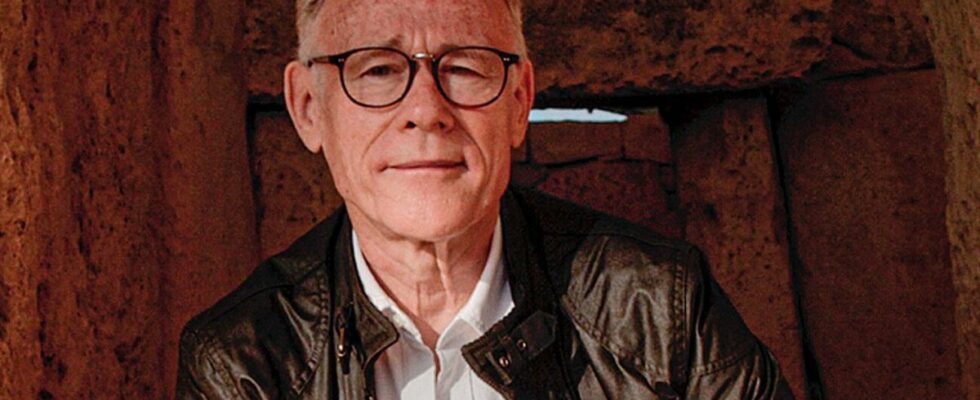A man who holds the truth, alone against (almost) everyone. No, we are not taking you to Marseille for this article, but to the comfort of your sofa, where you may have watched the eight episodes ofAt the dawn of our history on Netflix. We follow the wanderings of the British Graham Hancock on eight ancient sites, from Malta to Indonesia, via the United States. The pyramids of Egypt are spared us, surely to the delight of Egyptologists and fans of ancient Egypt, who have already had their share of strong emotions with many whimsical documentaries.
In At the dawn of our historywhich was one of the most viewed documents on the platform in France for the week of November 14, Graham Hancock, who presents himself as a journalist and not as a scientist, endeavors to question the commonly accepted dating of several places in around the world, to illustrate his thesis of a technically advanced civilization that would have disappeared at the end of the ice age due to a cataclysm.
Archaeologists want to classify these episodes as “science fiction”
Problem: nothing is proven and archaeologists have refuted the arguments put forward. The Society for American Archeology has even published an open letter to Netflix and UK channel ITN, which produced the episodes, calling the episodes “disinformation”. “After more than a century of professional archaeological investigation, we find no archaeological evidence to support the existence of an ‘advanced, global Ice Age civilization’ of the kind Hancock suggests,” the archaeologists write. , who recall that their profession has studied “hundreds of Ice Age sites”. This learned society asks to classify these episodes as “science fiction”*.
These episodes, “it’s great nonsense”, summarizes with 20 minutes Damien Karbovnik, historian and sociologist of religions at the University of Strasbourg. “It’s very well built, American style, but it’s very empty. There is no technical information,” adds this specialist in contemporary esotericism, who also holds a master’s degree in archaeology.
Coincidence or differences?
In the first episode, Graham Hancock travels to Indonesia, to the site of Gunung Padang, where there are stones arranged on terraces. He questions Dr. Danny Hilman Natawidjaja, a geologist who claims that the dating of the site is much older than commonly accepted. This one also advances that there would be rooms under the site. One of his proofs? He uses a radar that would probe the ground up to 30 meters deep. However, “a ground-penetrating radar is only accurate to a few tens of centimeters”, Explain archaeologist Jean-Paul Demoule to our colleagues from Parisian. As for the buried chambers, “they are not consistent with the readings”, underlines Damien Karbovnik. “Obviously, if the archaeologists thought there were cavities, they would dig,” he adds. A Maltese archaeologist posted a long thread of explanations to respond to episode three, where Graham Hancock travels to Malta.
One of Graham Hancock’s arguments, repeated in the series, is that several myths around the world tell the story of a deluge. Coincidence? He doesn’t think so. For him, this would prove that several peoples have remembered the story of the same event. The Briton is not interested in nuances, in differences in the stories, underlines Damien Karbovnik. “For us historians of religions, it is the singularities that are essential, they allow us to know the specificities of each religious system. Graham Hancock also insists on the figure of the snake, but evacuates important questions, on its symbolism for example, which can vary according to the place: “Is the snake perceived as a danger or as a protector? is one of the questions to ask, reminds Damien Karbovnik.
Overall, Graham Hancock “does the opposite of a scientific approach, that is to say that he has his theory and then he will seek his proofs”.
A “spiritual” and non-scientific approach
Over the episodes, Graham Hancock revives “the theory of superior ancestors”, explains the researcher. Behind this theory, “there is the idea of an advanced civilization”. Among the promoters of this hypothesis, some see the origin of this civilization on the side of extraterrestrials. This is not the case with Graham Hancock in these episodes. “He evacuated the extraterrestrial dimension and that makes his speech a priori more plausible. It’s quite clever. Moreover, in the series, he does not advance much on what this civilization was ”.
The main message of the series is in the last episode, underlines Damien Karbovnik. “The message is that there is an imminent catastrophe and that we are about to experience an apocalypse. “For the specialist, Graham Hancock is in a “spiritual” and non-scientific approach. “It looks like science, it wants to be science, but it isn’t. »
* 20 minutes contacted Netflix to ask them why the platform chose to broadcast this series. We did not have an answer at the time of writing this article.

